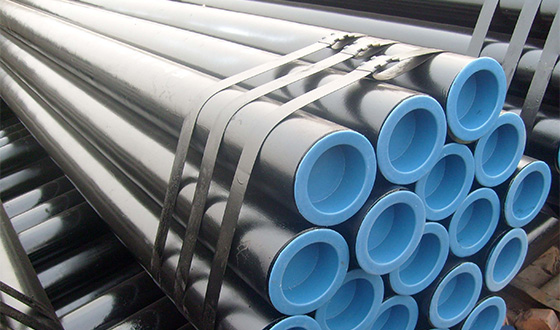-
Cangzhou Yulong Steel Co., Ltd.
-
Phone:
+86 13303177267 -
Email:
admin@ylsteelfittings.com
- English
- Arabic
- Italian
- Spanish
- Portuguese
- German
- kazakh
- Persian
- Greek
- French
- Russian
- Polish
- Thai
- Indonesian
- Vietnamese
- Zulu
- Korean
- Uzbek
- Hindi
- Serbian
- Malay
- Ukrainian
- Gujarati
- Haitian Creole
- hausa
- hawaiian
- Hebrew
- Miao
- Hungarian
- Icelandic
- igbo
- irish
- Japanese
- Javanese
- Kannada
- Khmer
- Rwandese
- Afrikaans
- Albanian
- Amharic
- Armenian
- Azerbaijani
- Basque
- Belarusian
- Bengali
- Bosnian
- Bulgarian
- Catalan
- Cebuano
- China
- China (Taiwan)
- Corsican
- Croatian
- Czech
- Danish
- Esperanto
- Estonian
- Finnish
- Frisian
- Galician
- Georgian
- Kurdish
- Kyrgyz
- Lao
- Latin
- Latvian
- Lithuanian
- Luxembourgish
- Macedonian
- Malgashi
- Malayalam
- Maltese
- Maori
- Marathi
- Mongolian
- Myanmar
- Nepali
- Norwegian
- Norwegian
- Occitan
- Pashto
- Dutch
- Punjabi
- Romanian
- Samoan
- Scottish Gaelic
- Sesotho
- Shona
- Sindhi
- Sinhala
- Slovak
- Slovenian
- Somali
- Sundanese
- Swahili
- Swedish
- Tagalog
- Tajik
- Tamil
- Tatar
- Telugu
- Turkish
- Turkmen
- Urdu
- Uighur
- Welsh
- Bantu
- Yiddish
- Yoruba

Dec . 03, 2024 23:40 Back to list
Understanding DIN 2525 Flange Specifications and Applications in Engineering Design
Understanding DIN 25 Flanges A Key Component in Fluid Systems
Flanges are essential components in various industrial applications, primarily used to join different sections of piping systems. In the realm of standard flanges, the DIN 25 flange plays a significant role due to its versatility and reliability. DIN stands for “Deutsches Institut für Normung,” which translates to the German Institute for Standardization. This organization has developed specifications for flanges, ensuring that they meet safety and performance standards widely accepted in industry.
Dimensions and Specifications
The DIN 25 flange belongs to the larger family of DIN flanges, specifically categorized under the DIN 2576 standard. This standard provides detailed dimensions, pressure ratings, and material specifications that ensure compatibility with various piping systems. The number 25 typically refers to the nominal diameter, which is approximately 25 mm. These flanges are available in different pressure ratings, ranging from PN 2.5 to PN 40, accommodating different operational requirements.
Material Options
DIN 25 flanges can be made from a variety of materials depending on the application's specific demands. Common materials include carbon steel, stainless steel, and even plastics in specific situations. Stainless steel is particularly favored in applications where corrosion resistance is critical, such as in chemical processing or food and beverage industries. The choice of material impacts not just durability but also cost, weight, and temperature handling capabilities.
Design Features
din 25 flange

The design of DIN 25 flanges typically includes a flat face or raised face configuration, which determines how the flange interfaces with the adjoining pipe or equipment. The flat face design is often used for low-pressure applications, while a raised face design is more common in high-pressure settings. Additionally, these flanges usually have bolt holes for secure fastening, helping maintain a tight and leak-proof seal between components. Gaskets are often inserted between the flanges when assembling them to enhance sealing effectiveness, especially in high-pressure environments.
Applications
Due to their robust construction and compatibility with various materials, DIN 25 flanges are used in a wide range of applications across different industries. They are commonly found in plumbing systems, gas pipelines, chemical processing plants, and even in HVAC systems. Their ability to effectively transmit high-pressure fluids makes them essential components in maintaining the integrity and efficiency of these systems. Furthermore, their ease of installation and maintenance contribute to their popularity among engineers and technicians.
Installation and Maintenance
Proper installation and maintenance of DIN 25 flanges are critical to ensuring their long-term performance. During installation, it is essential to clean the mating surfaces thoroughly and check for any defects. The bolts should be tightened according to the specified torque settings to avoid leaks and ensure a secure connection. Regular inspections should be conducted to identify any signs of wear, corrosion, or leakage. Prompt maintenance can prevent potential failures that could lead to operational disruptions or safety hazards.
Conclusion
In summary, DIN 25 flanges are vital components in a multitude of industrial applications, offering the reliability and versatility needed to handle various fluids and gases under different pressure conditions. With standardized dimensions and material options, these flanges provide engineers and contractors with the tools necessary to construct safe and efficient piping systems. Understanding the specifications and proper handling of DIN 25 flanges can significantly impact the overall performance of a fluid system, ensuring longevity and reliability in operations. Whether in chemical processing or municipal water systems, the importance of these flanges cannot be underestimated, making them indispensable in contemporary engineering solutions.
Latest news
-
ANSI 150P SS304 SO FLANGE
NewsFeb.14,2025
-
ASTM A333GR6 STEEL PIPE
NewsJan.20,2025
-
ANSI B16.5 WELDING NECK FLANGE
NewsJan.15,2026
-
ANSI B16.5 SLIP-ON FLANGE
NewsApr.19,2024
-
SABS 1123 FLANGE
NewsJan.15,2025
-
DIN86044 PLATE FLANGE
NewsApr.19,2024
-
DIN2527 BLIND FLANGE
NewsApr.12,2024
-
JIS B2311 Butt-Welding Fittings LR/SR 45°/90° /180°Seamless/Weld
NewsApr.23,2024











